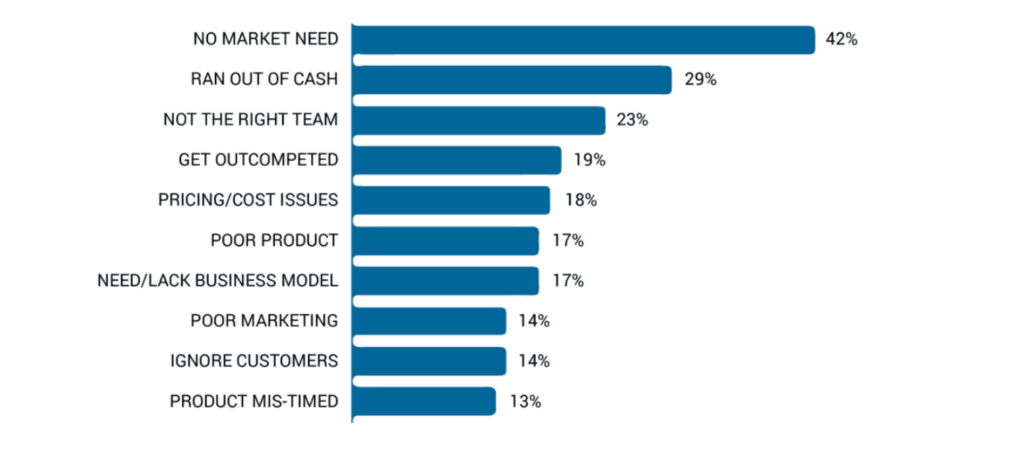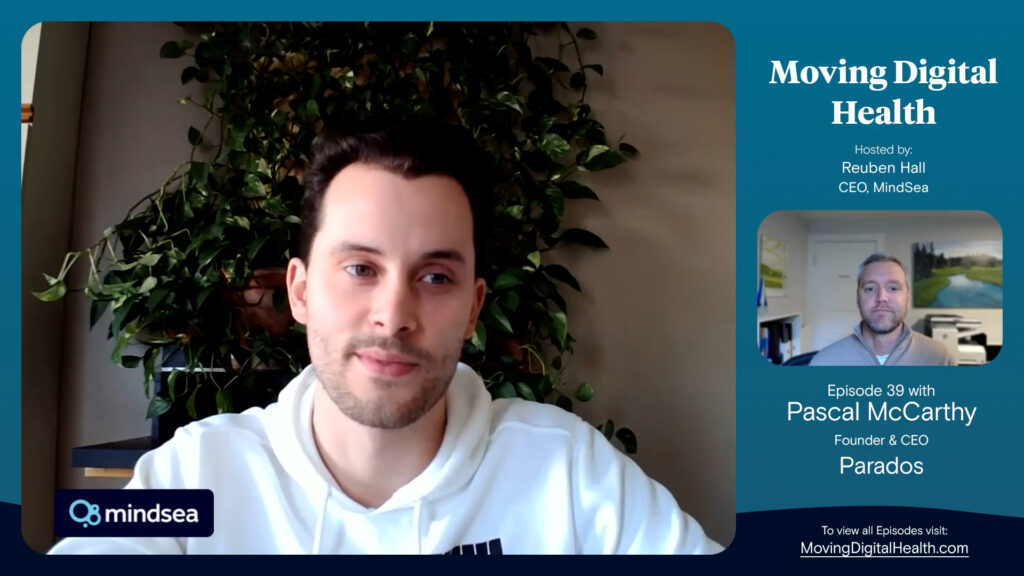What separates SaaS startups with high-ranking mobile apps from SaaS startups with low-ranking apps? The successful startups usually understand one thing the competition does not:
The market.
It’s not that they spent more money on marketing.
It’s not that they optimized their app for reviews.
And it’s not that they raised more venture capital.
Their apps are successful because they took the time and energy to better understand what the market is looking for—the pain points customers face and the features they want from an SaaS app. The best SaaS startups address the market’s needs rather than following their own intuition.
And when it comes to creating a quality mobile experience, insights about the target market are huge. Unearthing and taking advantage of these insights is what truly separates the startup successes from the startup failures.
In fact, in a CB Insights survey of failed startups, a lack of market need was given as the No. 1 reason for failure:

As CB Insights put it, more than 40 percent of the companies surveyed failed because they set about “tackling problems that are interesting to solve rather than those that serve a market need.” In other words, by spending time to understand and confirm the market need, you can increase your chances of success as a startup. So what can you do to better understand the market?
That’s the million-dollar question.
And while we of course believe that going directly to the customer is an important step, we often find that many startups are missing another opportunity right in front of them. The typical SaaS startup is made up of engineers, designers, marketers, and sales professionals. Of all these people, the sales team usually spends the most time talking to customers and working in the market.
It’s easy for people in the other roles to go weeks without speaking to an actual customer, yet it wouldn’t be a great sign if one of your sales reps went even a day without interacting with an existing or potential customer. Which is why we believe it’s important to make sure that sales has a seat at the table when you’re planning a mobile app.
Sales Has Deep Customer Insights To Share
On a daily basis, the sales team is required to communicate product value to the market, which means they’re constantly gathering insights that can guide you in creating the best mobile app experience for your customers. Sales hears the good and the bad, from comments about the competition to customers’ wishlists of dream features.
Engaging your sales team in the planning process is all about serving customers better. Here are several great questions to ask your sales team as you create your app:
- How do you position us when you’re going to the market today?
- What’s the primary benefit that you sell to customers?
- What benefit gets our customers most excited?
- What features do customers usually get excited about?
- What features are must-haves in order for us to compete?
- What competitors do our customers compare us to?
- What do customers often ask us to build that we haven’t?
- Is there anything that customers have asked for that our competitors don’t have?
- What opportunities exist for us to upsell our customers with more value?
By asking these questions, you’ll better understand the market and maybe even uncover untapped opportunities that could completely change your business.
Sales Isn’t Worried About The Latest Trend
The most refreshing part of having the sales team in these early discovery meetings is their focus on the customer. The best salespeople are so focused on understanding their customers and delivering value that they don’t have much time to keep up with the latest and greatest trends that could make them look good to peers. You won’t find top salespeople browsing Dribbble to see the latest trends in design or Hackernews to learn about the newest framework.
You’ll find the best salespeople on the phone with customers, at conferences speaking with leads, and in their inboxes nurturing relationships with prospects. As a result…
Sales can give you customer-oriented feedback.
No bias based on Twitter trends.
No bias based on Facebook likes.
Salespeople are so focused on the market that they can often give you feedback that’s just as good as if it came straight from the customer’s mouth.
Wrapping Things Up
Now that you understand the importance of including sales in your planning sessions, it’s time to execute. Take the questions we listed above and combine them with our App Design Checklist, a detailed list of everything you need to plan and build an app that is destined for success.
And if you’d like to learn more about how we collaborate with SaaS companies to create mobile apps, be sure to check out our project with Proposify. The case study breaks down the entire project from ideation to mock-ups to prototypes so you can see what our collaborative app development process looks like.
Whether you’re looking for an iPhone app design partner or an Android development team, we’d love to learn more about what you’re building. Let’s chat!



